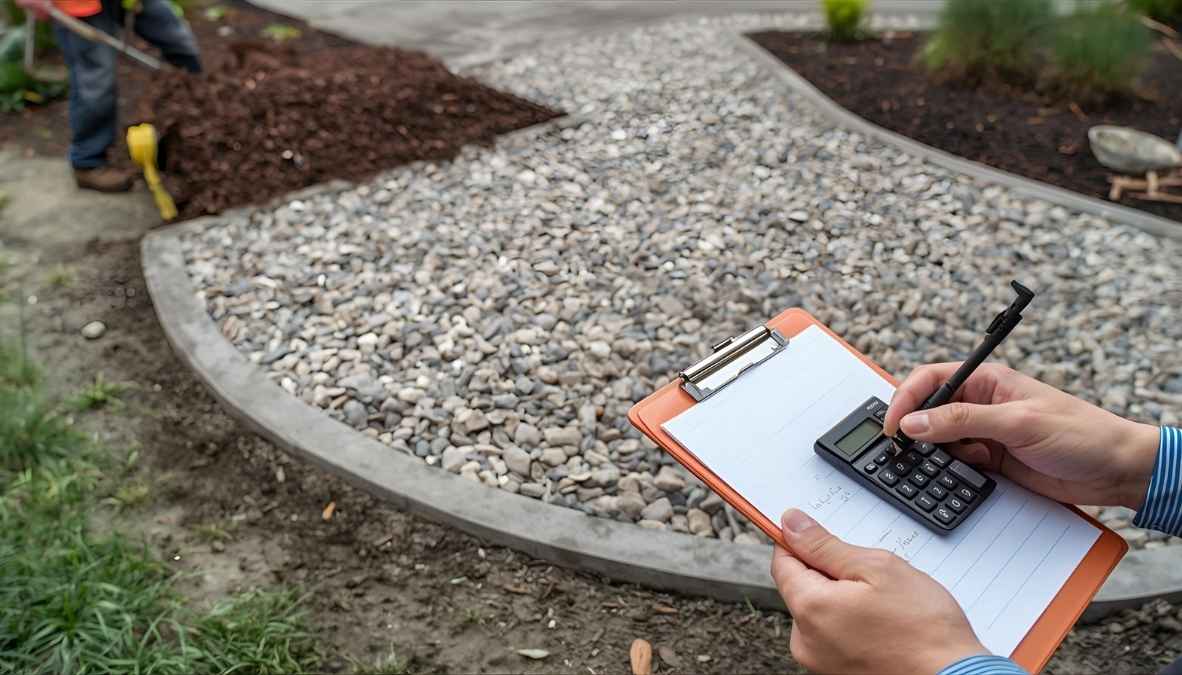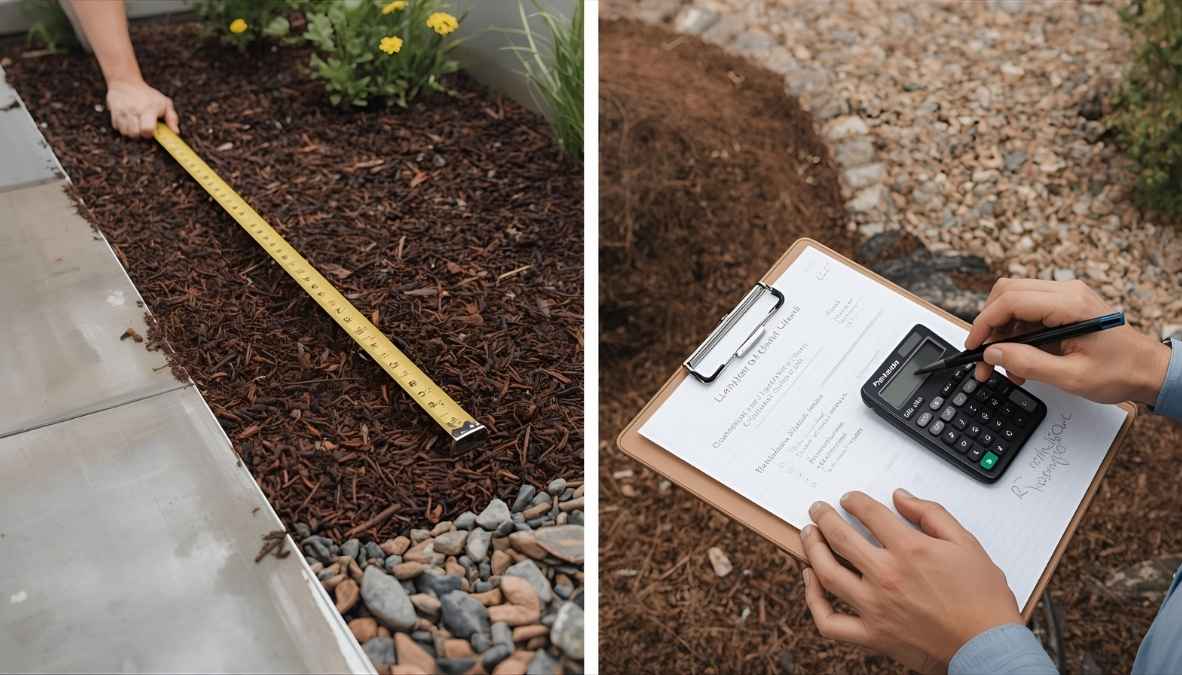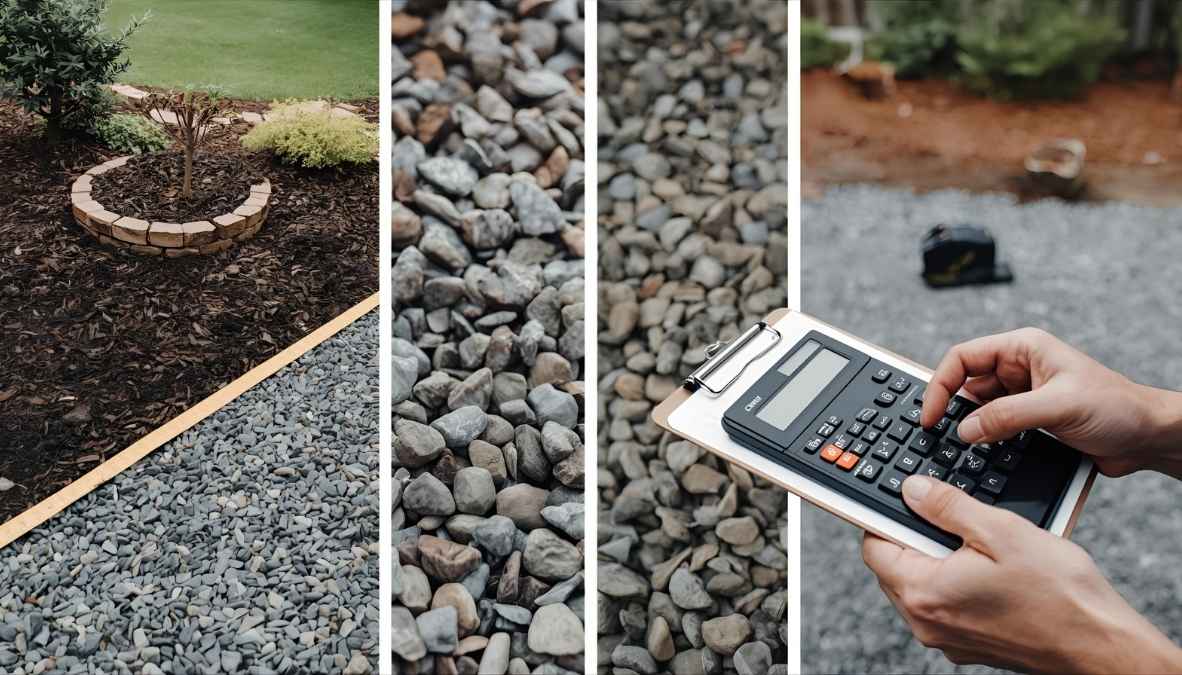Save money and stress with a cubic yard calculator. Learn simple formulas, avoid common mistakes, and get eco-friendly tips for your next landscaping or construction project.
Key Takeaways
- A cubic yard calculator helps you order the exact amount of material, saving cash and stress.
- Precise measurements prevent costly over-ordering or project delays.
- Fun examples and clear tips make calculations easy, even for beginners.
- Eco-friendly strategies cut waste and keep your project green.
- Real-world scenarios show you how to get it right every time.
What Is a Cubic Yard Calculator?
Definition and Purpose
Ever stood in a hardware store, staring at bags of mulch, wondering how many you need? A cubic yard calculator is your answer. It measures volume in cubic yards—think a 3-foot by 3-foot by 3-foot cube, or 27 cubic feet for materials like mulch, gravel, or concrete. Whether you’re landscaping your backyard, pouring a patio, or clearing renovation debris, this tool takes the guesswork out of planning.
Why You Need It
You’ll breeze through project planning with a cubic yard calculator, dodging math errors and saving time. It’s like having a pro by your side, ensuring you buy just what you need. Plus, it helps you budget smarter by estimating costs upfront, so you’re not stuck with extra gravel or an empty wallet.
The Real-World Cost of Guessing
Guessing how much material you need can burn a hole in your pocket. Order too much concrete, and you’re out $100–$150 per extra cubic yard. Worse, the EPA says over 30 million tons of yard waste hit landfills yearly, often from DIY over-ordering. You can avoid this mess. A cubic yard calculator ensures you get the right amount, saving money and keeping your project eco-friendly.
How a Cubic Yard Calculator Works
Basic Formula
Let’s make the math simple. To find cubic yards, multiply your project’s length, width, and height (in feet), then divide by 27. Meet Sarah, who’s building a 10-foot by 10-foot patio, 4 inches thick. She converts 4 inches to 0.333 feet, calculates 10 × 10 × 0.333 = 33.3 cubic feet, then divides by 27 to get 1.23 cubic yards. That’s the magic number for her concrete order.
Supported Shapes
You’re not limited to rectangles. Cubic yard calculators handle circles, triangles, and even wonky shapes. For example, Sarah wants a circular garden bed. She uses the cylinder formula (π × radius² × height ÷ 27) or picks “circular” on an online tool. Plug in the numbers, and you’re set—no math degree required.
Common Uses for Cubic Yard Calculators
Landscaping Projects
Picture Sarah planning a 100-square-foot garden bed with 3 inches of mulch. She calculates 100 × 0.25 (3 inches in feet) ÷ 27 = 0.93 cubic yards. That’s just under one yard, saving her from buying too much. Cubic yard calculators are perfect for mulch, soil, or gravel for gardens, paths, or lawns.
Construction Needs
For her patio, Sarah needs concrete. Her 10 × 10 × 0.333-foot slab needs 1.23 cubic yards, as we figured out. Knowing this, she orders the right amount, avoiding a mid-pour panic. Whether it’s a driveway, footing, or sidewalk, a calculator keeps your construction projects on track.
Waste Disposal
Renovating? Sarah’s tearing out old concrete, which weighs 2,000–3,000 pounds per cubic yard due to air gaps (unlike solid concrete at 4,000 pounds). A cubic yard calculator estimates debris volume, so she rents the right dumpster size, saving time and cash on disposal.
Step-by-Step Guide to Using a Calculator
Measure Your Area
Grab a tape measure and get your project’s dimensions. Sarah measures her patio: 10 feet long, 10 feet wide, 4 inches deep. She converts 4 inches to 0.333 feet (divide by 12). Pro tip: Write down measurements in feet to keep things straight and avoid mix-ups.
Input Measurements
Head to an online tool like CalculatorSoup or Omni Calculator. Sarah enters her patio’s dimensions, selecting “rectangular” and inputting 10 × 10 × 0.333. The tool crunches the numbers, giving her 1.23 cubic yards instantly. It’s fast, and you don’t need to be a math whiz.
Estimate Costs
Now, multiply your cubic yards by the material’s price. Sarah’s concrete costs $120 per cubic yard, so 1.23 yards is about $148. Check local suppliers for deals—some offer bulk discounts or lower delivery fees. This step keeps your budget in check and avoids surprises.
Material-Specific Calculations
Concrete
Concrete is heavy—about 4,000 pounds per cubic yard. For Sarah’s 20-foot by 3-foot sidewalk at 4 inches thick, she calculates 20 × 3 × 0.333 ÷ 27 = 0.74 cubic yards. Since concrete runs $100–$150 per yard, precision saves her from overspending. Add a 10% buffer for uneven surfaces.
Mulch and Soil
Mulch weighs 400–800 pounds per cubic yard, lighter than concrete. Sarah’s 200-square-foot garden at 3 inches needs 200 × 0.25 ÷ 27 = 1.85 cubic yards. Soil varies by type—wet or sandy soil is heavier. Stick to 2–3 inches for mulch to get that perfect coverage.
Gravel and Sand
Gravel weighs 2,800–3,400 pounds per cubic yard. For Sarah’s 200-square-foot driveway at 4 inches, she calculates 200 × 0.333 ÷ 27 = 2.47 cubic yards. Sand is similar but compacts differently. Knowing the weight helps plan delivery or truck capacity.
Tips to Avoid Common Mistakes
Conquer Unit Confusion
Mixing up units is a DIY trap. You need to convert inches to feet—6 inches is 0.5 feet, not 6 feet. Unless you want a mulch volcano visible from space, divide inches by 12 before calculating. Sarah learned this the hard way when she almost ordered 10 times too much gravel.
Handling Irregular Shapes
Got a weird-shaped garden? Break it into smaller rectangles or triangles, like Sarah did for her curved flower bed. Calculate each part and add them up, or use an advanced calculator that handles irregular shapes. Sketching the area on paper helps you visualize it.
Cubic Yards vs. Square Yards
Here’s a common mix-up: cubic yards measure volume (3D, like a pile of dirt), while square yards measure area (2D, like a flat lawn). For Sarah’s patio, she needed cubic yards for concrete volume, not square yards for surface area. Always include depth for cubic yards.
Avoid Over/Under-Ordering
Running out of material mid-project—or having a mountain of extra is no fun. Add a 10% buffer to your calculation for waste or uneven ground. Sarah orders 1.35 cubic yards for her 1.23-yard patio, just to be safe. Check if suppliers sell partial yards to save cash.
Cost-Saving and Eco-Friendly Strategies
Precise Calculations
Nailing your measurements saves money and the planet. Over-ordering can jack up costs by 15–20%, and the EPA notes 30 million tons of yard waste hit landfills yearly. You’ll keep your project lean by using a cubic yard calculator to order exactly what you need.
Bulk Purchasing
Big projects? Ask suppliers for bulk discounts. Sarah saved $50 by negotiating for her 2.47 cubic yards of gravel. Compare local vendors, as delivery fees vary. A quick call can make a big difference in your final bill.
Sustainable Choices
Go green with recycled materials, like crushed concrete for driveways. Sarah reused soil from her yard for her garden, cutting costs and waste. Precise calculations mean less excess material clogging landfills, making your project eco-friendly and budget-friendly.
Comparing Cubic Yard Calculators
Online Tools
Online calculators like CalculatorSoup or Omni Calculator are your go-to for quick math. CalculatorSoup handles multiple shapes and cost estimates, while Omni’s simple design suits beginners. Both are free and work on any device, perfect for planning at home or on-site.
Mobile Apps
Apps are great for on-the-go calculations. Sarah used one at her project site, entering measurements in real-time. The catch? Some apps skip advanced features like irregular shapes. Check reviews to find one that fits your needs.
Manual Calculations
No tech? Use the formula: length × width × height ÷ 27. It’s flexible but slow and error-prone. Sarah tried it once, miscalculated, and nearly ordered double the concrete. For big projects, stick with a calculator to save your sanity.
FAQs About Cubic Yard Calculators
How much does a cubic yard of concrete cost?
You’ll pay $100–$150 per cubic yard, depending on your area and supplier. Prices vary, so call local vendors for quotes. Using a cubic yard calculator ensures you order just enough, keeping your budget intact.
How do I convert tons to cubic yards?
Divide the material’s weight by its density (e.g., gravel: ~2,800 lbs per cubic yard). For 5,600 lbs of gravel, it’s 5,600 ÷ 2,800 = 2 cubic yards. Check the material’s density for accurate results.
How many cubic yards do I need for mulch?
Measure your area in square feet, multiply by depth in feet (3 inches = 0.25 feet), and divide by 27. For a 200-square-foot bed at 3 inches, it’s 200 × 0.25 ÷ 27 = 1.85 cubic yards.
Can I calculate cubic yards manually?
Yes, multiply length × width × height (in feet) and divide by 27. For a 10 × 10 × 0.333-foot area, it’s 33.3 ÷ 27 = 1.23 cubic yards. Always double-check conversions to avoid mistakes.
Key Takeaway
You can master any project with a cubic yard calculator. Measure smart, save money, and keep it green. Ready to build that dream patio or garden? Grab a tape measure, pick a calculator, and make Sarah proud!





